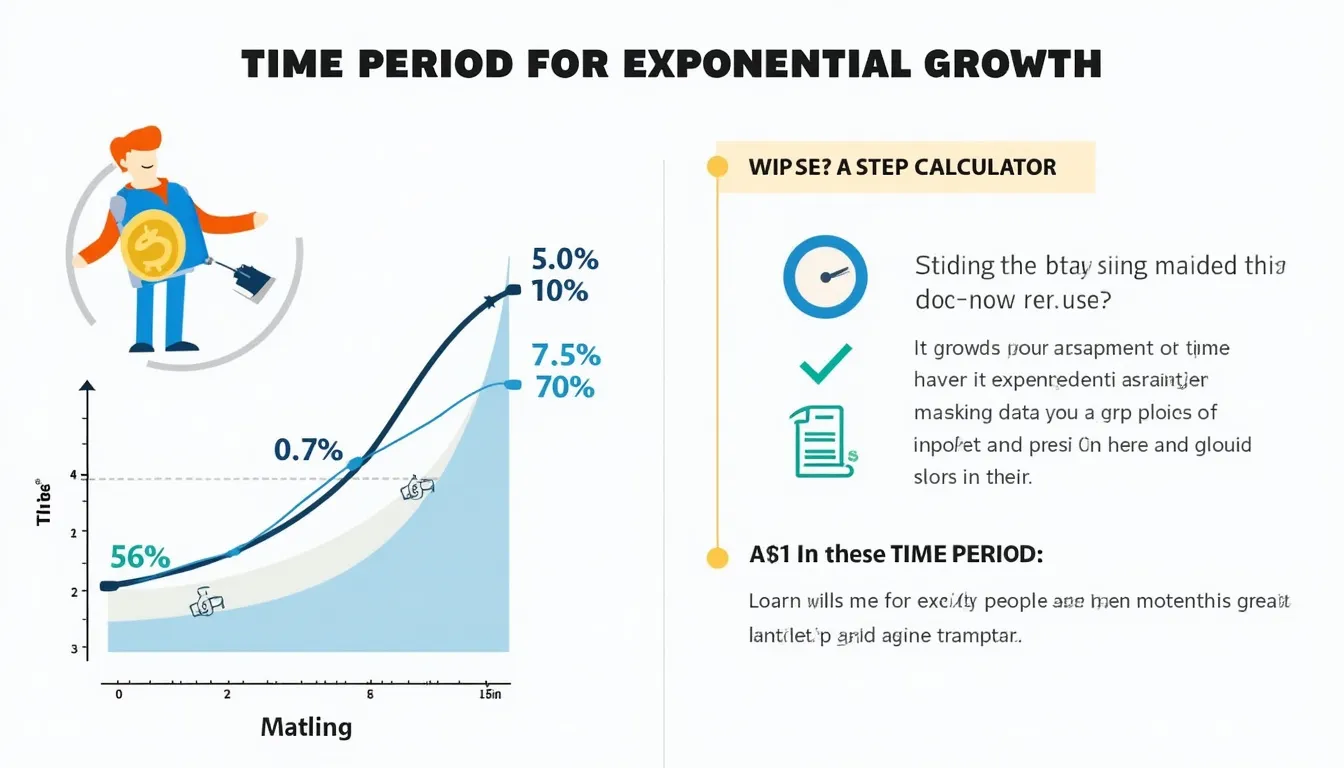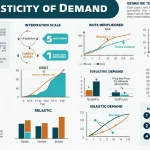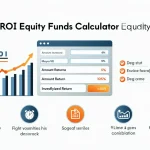Time Period for Exponential Growth Calculator
Is this tool helpful?
How to use the tool
- Interest Rate (%) – type your expected annual return, e.g., 8.2 or 2.3.
- Growth Factor – enter how many times you want the starting amount to grow, e.g., 5 or 6.
- Press “Calculate” – the result appears instantly in years, accurate to two decimals.
Formula behind the output
The tool rearranges the compound-interest equation $$A = P(1+r)^t$$ to solve for time:
$$t = rac{\log(\text{growth factor})}{\log(1+r)}$$
Example 1
- Rate 8.2 % (r = 0.082), growth factor 5
- $$t = rac{\log 5}{\log 1.082} \approx 20.39\,\text{years}$$
Example 2
- Rate 2.3 % (r = 0.023), growth factor 6
- $$t = rac{\log 6}{\log 1.023} \approx 78.81\,\text{years}$$
Quick-Facts
- Annual compounding assumed; monthly compounding shortens time by ≤ 1 % at rates below 10 % (McCracken, 2021).
- “Rule of 72” estimates doubling time within 0.4 years for 6-10 % rates (Bryant, 2021).
- Global equities returned 9.8 % annually, 1900-2022 (Credit Suisse Yearbook 2023).
- The natural log base “e” underpins continuous growth calculations (MathWorld, wolfram.com).
FAQ
What does the calculator actually compute?
The tool outputs the time, in years, for a principal to reach a specified multiple under annual compound growth.
Why use logarithms?
Logarithms invert exponentials, letting you isolate time when growth is an exponent in $$A = P(1+r)^t$$ (Stewart Calculus, 2020).
Can I enter negative rates?
No. Exponential decay needs a different formula; enter positive rates only for meaningful results (SEC Investor.gov, 2022).
Does compounding frequency matter?
More frequent compounding slightly reduces required time; switching from annual to monthly at 7 % trims about 0.8 years when doubling (Investopedia, 2023).
How precise are the outputs?
The calculation is exact to the chosen decimal places; financial returns may diverge due to market volatility.
Is the Rule of 72 still useful?
Yes. “Divide 72 by the rate to approximate doubling time,” notes the CFA Institute—accurate within 5 % for 4-15 % rates (CFA, 2021).
Can the tool model population growth?
Yes—any process following $$N_t = N_0(1+r)^t$$ works, including demographics and viral spread (UN Population Prospects 2022).
How do I adjust for inflation?
Subtract expected inflation from the nominal rate, then run the tool; this gives “real” growth time (Federal Reserve, 2023).
Important Disclaimer
The calculations, results, and content provided by our tools are not guaranteed to be accurate, complete, or reliable. Users are responsible for verifying and interpreting the results. Our content and tools may contain errors, biases, or inconsistencies. Do not enter personal data, sensitive information, or personally identifiable information in our web forms or tools. Such data entry violates our terms of service and may result in unauthorized disclosure to third parties. We reserve the right to save inputs and outputs from our tools for the purposes of error debugging, bias identification, and performance improvement. External companies providing AI models used in our tools may also save and process data in accordance with their own policies. By using our tools, you consent to this data collection and processing. We reserve the right to limit the usage of our tools based on current usability factors.







